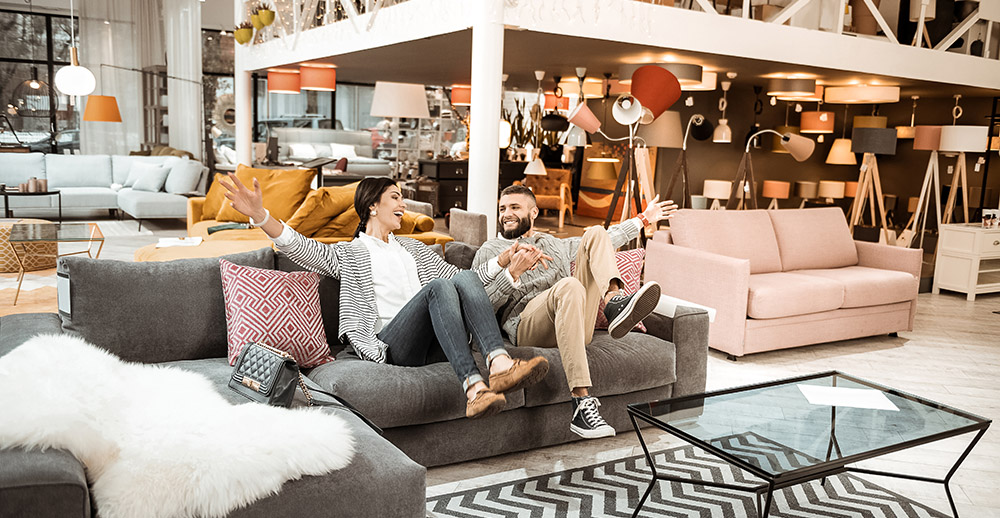
The Customer Experience
Furniture retailers have learned is that it takes more than great furniture designs or discount prices to capture more attention. They’re focusing more on the in-store experience, because a mediocre experience can make a negative impression. But, they often forget to enhance online experiences, as well as after the sale, when customers are not in the store.
The key to making a happy shopper relies more upon activating their emotions before and after the purchase experience. They need to have a sense of anticipation before they make a decision. After their purchase, they need to feel your gratitude for choosing your store over all the other options available. This makes them feel special.
3 Tips for Happy Shoppers
Making furniture shoppers happy goes beyond the sale. It’s that extra mile that you’re willing to take. This will show them that you’re different and care about their shopping experience. The following four tips explain how this works.
1. Building Anticipation
Most of what makes a happy shopper begins during their moments of anticipation. To create the feeling of anticipation, retailers need to tease, tempt, and treat their customers to a unique and personal experience.
Positive expectations are really important in making furniture shoppers happy. To build these positive vibes, furniture retailers have some great tools at their disposal. Compelling street-side displays and social media campaigns can tempt and tease their customers with products that complement their lifestyle.
Customers also want to be associated with brands that they believe in and feel like they are supporting them. Having a compelling story on your “About Us” page will give them a narrative that they can feel good about. This defines the shopper’s expectations while setting the stage for greater satisfaction after the sale.
2. The In-Store Experience
A customer’s direct experience with your store is about fulfilling those positive expectations created through your marketing efforts. If you don’t stick to the script you wrote for them, then their experience becomes a negative one. And there’s little you can do to change it. So, be honest and provide authentic answers for their concerns.
A good example of this arises from sale pricing, because customers may confuse sale pricing with regular pricing. Their expectation is to get a great deal, but they may be disappointed to learn that the sale price was not on the items they wanted. This is something that needs to be taken care of quickly, or else their in-store experience will be a negative one.
3. Personalized Follow-Up
To make a great impression—a memorable impression—you need to follow up with them after their purchase. This is the perfect opportunity to send handwritten “Thank You” cards and provide an insider’s view of products and services that will fit their needs. It’s this type of personalized follow-up that people want and expect. Another great thing about personalized messaging is that it teases and tempts them. It builds anticipation for their next purchase.
“Happiness researchers find that upwards of half of someone’s happiness is built in moments of anticipation and remembering,” the report authors write. “Radiant brands [and radiant retailers] exude the joy of anticipation and the warmth of remembering.”
Retail Success
Selecting home furnishings is an emotional experience. These items do more than fill spaces. They make a house a home. That’s why your furniture stores need to be more than just a showroom. They have to be a destination for your customers to have meaningful and memorable experiences.